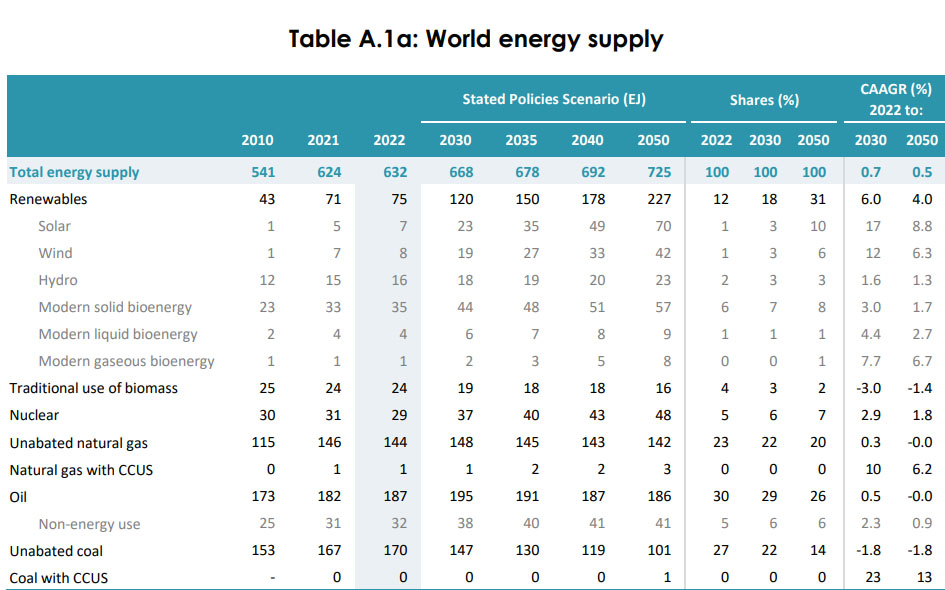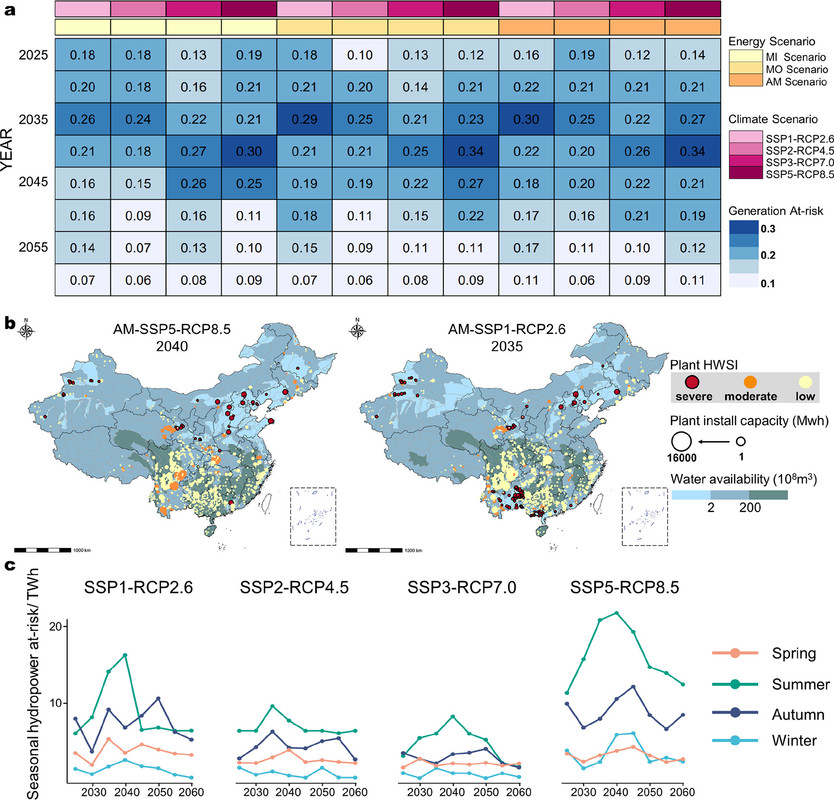Science
Related: About this forumEffects on Global Heating on Hydroelectricity and Water Scarcity in China.
The paper to which I'll refer in this post is this one: Water Scarcity Assessment of Hydropower Plants in China under Climate Change, Sectoral Competition, and Energy Expansion Linze Hou, Jianxun Yang, Chenyi Ji, Miaomiao Liu, Wen Fang, Zongwei Ma, and Jun Bi Environmental Science & Technology 2024 58 (24), 10536-10547.
It is difficult for me to choose between the vast death toll from air pollution or global heating as to which I regard as the worst energy disaster of all time. The former has killed more people, if the paper I often cite from Lancet is accurate - I think that likely - but the latter is catching up, especially in indirect causes, the driver of the "indirect causes" being weather extremes presenting as extreme instability. (We are also seeing an increasing direct death toll of global heating in what is called "heat stroke."
Although it pales before these two ongoing energy disasters, a possible third highest energy disaster is not generally acknowledged, the 1976 serial dam collapses in China known collectively as the Banqiao disaster, which did not get all that much attention in the world press despite a vast death toll:
Case Study: Banqiao Dam (China, 1975)
A bill of goods has been sold to humanity that dependence on weather for energy is a good idea. It's actually a reactionary idea; dependence on weather for energy, including, including but not limited to the availability of biomass (partially through animal power), was largely abandoned by the dawn of the 20th century, this when the world population was a fraction of what it is now. This reactionary posturing is clearly failing, at least if a goal is weather stabilization. So called "renewable energy" has soaked trillions of dollars out humanity in the last decade and remains - at least in the case of the popular but disastrous "solar and wind" industries - trivial and useless if the goal is to address global heating or reduce the use of dangerous fossil fuels. (If the goal is to produce fabulous marketing of the status quo; wild eyed cheering; and wishful, if delusional, thinking, solar and wind are successes.) One can recognize this simply by monitoring the concentrations of the dangerous fossil fuel waste carbon dioxide in the air.
I have noted in this space many times that the readings recording increases as measured at the Mauna Loa CO2 Observatory, which has functioned since 1959 are unambiguous. For example: A New Record Concentration for CO2, 427.98 ppm Has Been Set for the Mauna Loa CO2 Observatory's Weekly Average. It is clear the rate of global heating from dangerous and deadly fossil fuel waste is accelerating, not decelerating. Of the 50 highest recorded increases in comparison to weekly readings a Mauna Loa CO2 Observatory with the same week ten years ago, all but two, in 2019, have occurred in this unfinished
2020s decade, 15 of them this year.
These data are recorded weekly, released every Sunday:
Weekly value from 1 year ago: 422.37 ppm
Weekly value from 10 years ago: 399.92 ppm
Last updated: July 14, 2024
Weekly average CO2 at Mauna Loa
Hydroelectricity in China, and in India, the world's two most populous nations, depends on the Himalayan glaciers; it's not a pretty picture.
From the introduction of the paper cited at the outset:
As one of the most touted solutions to the climate crisis, hydropower itself is now facing rising water scarcity risks. Hydropower sector relies upon water resources of substantial and predictable volume. (4) Climate change induces changes in precipitation, evaporation, and runoff at various spatial scales, which increases the likelihood of heat waves and droughts and disrupts the stability of water resources. (5,6) Water scarcity limits the electricity generation capacity of hydropower plants, (7) and it is projected that global hydropower capacity would decrease by a maximum of 10–17% per month due to declining flows by the 2050s. (8) To fill the demand gap caused by reduced hydropower generation, local governments may shift the electricity generation mix toward fossil fuels, which increases carbon emissions and hinders the net-zero target. It is estimated that one standard deviation increase in water scarcity results in 15% expansions in natural gas generation and pollution emission in the US. (9) Disruptions in hydropower generation due to water scarcity are also sources of social and economic risk. In 2022, heatwave dried up Sichuan Province in China, where hydropower takes 80% of the province’s total power capacity. The local government issued an industrial power rationing plan, which led to cascading output losses through supply chain networks. (10) In this context, it is crucial to identify water scarcity risks of hydropower projects and implement targeted adaptation strategies to ensure water–energy security.
Moreover, global water demand has sextupled in the past century, and the competition between sectoral water uses further complicated water scarcity risks in hydropower sectors...
The paper offers a set of "scenarios."
The "scenarios" described are linked to the climate "scenarios" in the 2022 IEA World Energy Outlook; I've referred to these annual documents, including that of 2023, many times in this space. Even in the IEAs soothsaying, which I personally regard as overly optimistic handwaving, they do not predict an end to dangerous fossil fuels.
The numbers (2023) are here: 2023 World Energy Outlook published by the International Energy Agency (IEA), Table A.1a on Page 264.

All of the soothsaying about the end of fossil fuels has proved delusional. Nothing we are doing is working (again, if "working" is defined as "if the goal is to address global heating or reduce the use of dangerous fossil fuels." )
As far as the soothsaying goes, it's not clear that the gas will be there, the oil will be there, but coal will be; the claim that wind and solar, unreliable forms of energy, are alternatives are coal is a lie supported by the availability of gas and oil. More importantly, it's not clear that the water will be there.
Hydroelectricity is the only form of so called "renewable energy" that can hold a night light to nuclear energy; and even that produces less than half of what nuclear energy produces in an atmosphere of vituperation and dishonest fearmongering.
It's at risk in China. A graphic from the paper:

The caption:
China has a very successful operative nuclear power plant manufacturing infrastructure, now the best in the world. They now have 54 operating nuclear reactors, matching France, and 25 under construction.
Given the risks to its water supply, they'd better keep at it.
Their huge solar over capacity isn't doing shit to address climate change, all the cheering and pretending notwithstanding.
We can continue of course, to lie to ourselves; we're very good at that. However reality is breaking through.
Have a pleasant workweek.
EarnestPutz
(2,564 posts)......the complexity of dealing with climate change, energy production, public health, agriculture, potable water supply, flood control, air quality, waste disposal, population and population movement, and a myriad of other problems to consider if we want to continue to eat, breathe, and turn on the lights. The word "complexity" doesn't do it justice.
Just read an article about the Three Gorges Dam in China and how climate change has affected it's original plans for power generation, flood control, erosion control and irrigation. Affected all of these things and more and none of them in a good way.
Edit: Had to look up "CCUS" - Carbon Capture, Storage and Utilization. Rather than just not producing CO2.
Gratuitous Addenda: "An atmosphere of vituperation and dishonest fearmongering" - NN, nicely put.